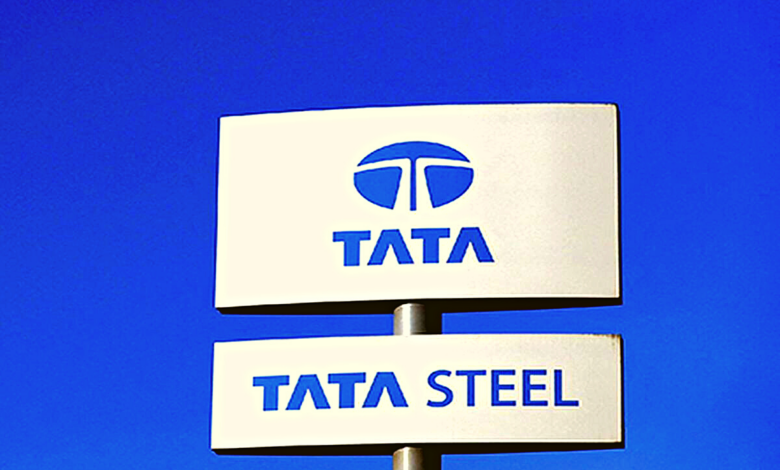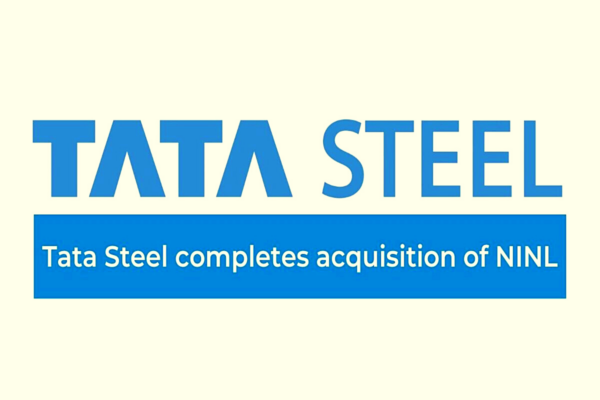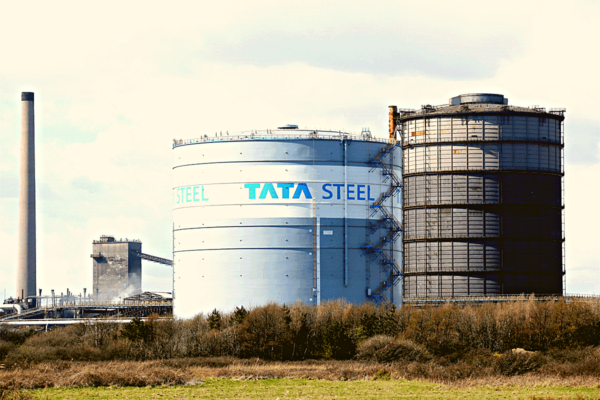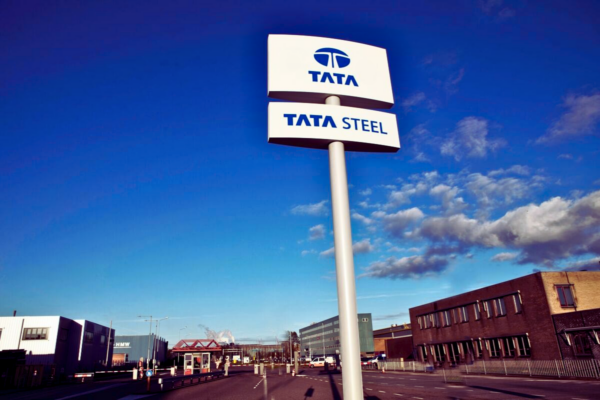Tata Steel Will Merge 7 Subsidiaries By FY24: CEO
Tata Steel will first work to accomplish combining these seven enterprises before it takes the initiative to combine more of its subsidiaries. In FY24, the merger is anticipated to be finished.

Tata Steel Will Merge 7 Subsidiaries By FY24: CEO
The merger of seven subsidiary companies with Tata Steel is anticipated to be completed in the fiscal year 2023–2024, according to T V Narendran, CEO and managing director of Tata Steel. The leading production site for the Indian multinational steel company Tata Steel Limited, a member of the Tata Group with headquarters in Mumbai, is located in Jamshedpur, Jharkhand. At 13 million tonnes per year, it is only surpassed in size by the Steel Authority of India Ltd. in terms of domestic production in India (SAIL).
To increase synergies, efficiency, and cost savings, Tata Steel’s board authorized a plan in September 2022 to integrate six companies into the business. When asked about the timing, the CEO said they had recently announced the merger of Angul Energy and had previously announced the merging of six other companies. According to CEO, regulatory procedures, including NCLT clearances, must be completed before the transaction can be finalized. The procedure is anticipated to be finished in the following fiscal year.
MERGERS OF ENTITIES
The business plans to unite Tata Steel Long Products (TSPL) and Tinplate Business of India, Tata Metaliks, TRF, Indian Steel & Wire Products, Tata Steel Mining, and S&T Mining Company with Tata Steel.
Mr Narendran claims there are no current intentions to merge the recently bought NINL with Tata Steel. The Odisha Municipality Corporation (OMC) and the Odisha Power Infrastructure Corporation Limited (IPICOL) have partnered with the National Mineral Development Corporation (NMDC), the Bharat Heavy Electricals Limited (BHEL), and the Maharashtra Energy Conversion and Distribution Corporation (MECON) to form Neelachal Ispat Nigam Limited (NINL).
Because of financial tribulations, the plant was closed in March 2020. To meet its internal energy requirements, NINL operates a captive power plant and an air separation unit that creates oxygen, nitrogen, and argon.
MERGER OF NINL
Under the terms of the government’s acquisition deal, the company has committed to operating the new asset independently as a legal entity for three years. After three years, Tata Steel will decide what is best for Neelachal Ispat Nigam Limited. In addition, Tata Steel intends to complete the merger of these seven organizations before considering the merger of further subsidiary businesses.

TATA STEEL’S Q3 Performance
According to a regulatory filing, rising expenses caused Tata Steel to register a combined net loss of Rs 2,501 crore in the third quarter of the fiscal year. In contrast, the business had made a net profit of Rs 9,598 crore at the same time last year.
Tata Steel’s combined total income decreased to Rs 57,354 crore from Rs 60,842.72 crore during the same period last year. The company’s expenses ascended from Rs 48,666.02 crore to Rs 57,172.02 crore in the period under review. Additionally, the business revealed in a separate statement that its total debt as of right now is Rs 71,706 crore.
The highest growth rate in history
The Tata Group is anticipated to grow at its fastest rate in company history, with both publicly traded and unlisted companies set to increase by more than 20%. Furthermore, substantial capital expenditure plans have been created by both established and developing businesses. Specific companies will use internal accruals to fund their own growth.
“The Tata Group is experiencing strong growth across the board, and in 2022–23, it is anticipated to increase by almost 20% annually, which is high for a group of our size. Even though each company in our portfolio has its cycles, the group’s overall profit and cash flow are highly healthy.
We are pleased that the group has accomplished its stated objectives, which included each conventional business funding its own expansion through internal accruals, “In an exclusive interview at the Bombay House headquarters of the Tata Group, N Chandrasekaran, chairman of Tata Sons, noted.
Tata Motors and Jaguar Land Rover will invest a combined $25 billion (2.06 lakh crore) over five years, while Tata Power and Tata Steel will each invest up to $10 billion (82,500 crores). The united group of airlines will be housed in Air India, which will receive considerable investments. For the coming five years, the Tata Group plans to invest a total of $90 billion (7.42 lakh crore) in both new and current enterprises.
Electric vehicles (EVs), batteries, renewable energy, 5G, precision electronics, and even semiconductors are among the new industries. The corporation will soon decide the fate of its failing UK steel division. He stated, “Tata Sons provides spiritual assistance with further funding if requested. He continued, “I anticipate Tata Steel and Tata Motors to match Tata Consultancy Services (TCS) soon, responding to the group’s long-standing criticism about its dependence on the IT company.
The market capitalization of TCS is $12.94 billion. TCS has a larger market cap than both Tata Steel (1.32 lakh crore) and Tata Motors (1.6 lakh crore). At the same time, the IT company’s sales are lower than those of the other two businesses.
“Developing Air India Revamp”

3.01 lakh crore ($38 billion), 2.45 lakh crore ($32 billion), and 1.96 lakh crore ($26 billion), respectively, represent the revenue of Tata Motors, Tata Steel, and TCS. By March 2024, AirAsia, Vistara, Air India Express, and Air India are projected to function as one combined organization, Chandrasekaran claimed.
“Tata Sons is currently firing on all cylinders concerning the restructuring of Air India.” He added that human resources, technology, engineering, customer service, flight operations, ground handling, modernization, and fleet expansion are all part of a whole new organizational culture currently under development.
Additionally, it has established a body to carry out EV battery plans and is looking for locations to begin production. “We are prepared and will shortly begin our India plan. It will also take into account Tata Motors‘ needs. Additionally, we are assessing a foreign website, but that will take some more time, “Chandrasekaran stated.
The company is putting a lot of money into new growth initiatives like Air India, Tata Neu SuperApp, batteries, Tata Electronics, and 5G. Tata Sons are now reviewing the proposed semiconductor business venture. “Currently, semiconductor business tactics are being discussed. Considering how difficult the work is, proper preparation and execution are essential, “The Tata Sons Chairman made a statement.
Chandrasekaran assumed leadership in 2017 as the organization’s first non-Tata chairman, and in February 2022, his five-year term was extended. He added that Tata Digital has been working to improve the user experience for its SuperApp, Tata Neu. “The software received much attention and downloads shortly after its debut. But some issues required to be fixed, and the client experience was subpar.
Many of these concerns have been resolved in the past six months. Tata Neu is now having huge success in several different areas. The app ratings in iOS and Android have recently increased to 4+. Customers’ monthly visit frequency and monthly transactional customers, for example, have been steadily growing. Additionally, customers are buying across more categories.”
No pressure to meet consumer demand
Additionally, Chandrasekaran disregarded any hiccup in consumer demand or tension in their mindset. “Whether it’s in consumer goods, electronics, retail, hotels, power, passenger vehicles, or IT, all of our businesses are expanding. Clearly, our companies are noticing a growth momentum. I, therefore, see no concern or hiccup in demand and increase. All of our companies, including Tata Consumer, Westside, Croma, Titan, Indian Hotels, and Steel, have demonstrated substantial growth, “added he.
According to him, the Tata Group’s synergies to enhance the foundation, modernize, and develop new companies support its growth ambitions. In the first five years of Chandrasekaran’s presidency, Tata Sons capitalized on the balance sheets of the group entities to concentrate on performance. There are currently 30 companies in the group, spread over ten different industry sectors, including infrastructure, financial services, aerospace and defence, consumer and retail, steel, technology, tourist and travel, telecom and media, and trade and investments.
Edited by Prakriti Arora





